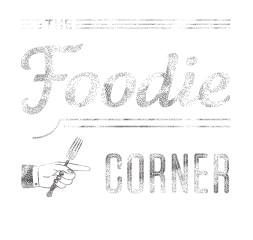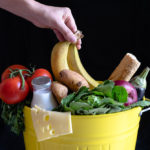12 Ways To Easily Reduce Food Waste At Home
Simple ways in which we can all fight food waste in our homes. As promised in my previous article.
I know, you’ve probably read hundreds of articles like this. You might already tick several of these boxes, in which case thank you for doing what you can to help address this major problem. The best quote I’ve read regarding doing our bit for the planet is “We don’t need a handful of people doing zero waste perfectly. We need millions of people doing it imperfectly.” – Anne Marie Bonneau We can’t all be getting it right all of the time, but being conscious of the issue and acting in small ways, helps. What doesn’t help is the “I can’t save the world” mentality. You can, we can, by learning more and doing as much as possible.
But let’s get to the practical bit. Here are some ways in which we can all contribute to reducing the unthinkable amount of food waste that is happening all around us. I talked about how this waste affects the planet in my previous article, take a read through it if you’re not quite sure how the two are connected.
Before shopping:
1. CHECK YOUR PANTRY. Take a few minutes and go through the cupboards to see what’s there. You might have a couple of packets of pasta lurking in the back. Think how you can use it up. Then think how to use the half opened couscous or buckwheat or quinoa too. Tip: Try to keep ingredients you don’t use often in a place where you can see them. If they are hidden they will be forgotten.
2. PLAN. I can’t stress the importance of this enough. Whether you’re planning in order to use stuff you already have, or planning a completely new menu, it’s important to not over do it with impulse buys that end up sad and lonely in the back of the fridge. Yes that cauliflower looks lovely and fresh, but will you manage to eat it along with all that broccoli, kale and cabbage also in your basket? Tip: it helps to shop on a full stomach and not when you’re hungry.
3. SAVE THE UGLIES. Choose the mishapen, weird looking fruit and veg because in all likelyhood, no one else will. These items are perfectly fine to consume. This might be harder to do in some supermarkets as unfortunately the ugly ducklings don’t even make it to the shelves, they have already been thrown out. If you have a local market try and visit as often as possible. Tip: sometimes you might find extra ripe fruit or veg on offer. If you’re making banana bread or tomato sauce, these are what you need! Win win.
4. CHECK THE DATES. This one is a biggie, and it has two parts for me. On the one hand, when we know we are going to consume something soon, we can choose the one with the closest expiry date. Store shelves can have products with varying dates as they are restocked before entirely empty. Out of habit a lot of the time we reach for a newer item (one with a longer date), but what happens if we all do that? Where do the nearly expired items go? Hmm, they may well be disposed of.
On the other hand, sell by / use by / best before dates can be a little misleading. Many times they don’t even mean what we think. A study carried out by the European Commission (2018), estimates that up to 10% of the 88 million tonnes of food waste generated annually in the EU are linked to date marking! (1) In the US, it has been estimated that confusion over date labeling accounts for approximately 20% of consumer food waste.(2) Crazy!
It’s worth looking into this more, but try to find information relating to your own country as the rules might differ. For example did you know that the dates displayed on products in the US do not refer to their safety? From the Food Safety and Inspection Service (FSIS): “Manufacturers provide dating to help consumers and retailers decide when food is of best quality. Except for infant formula, dates are not an indicator of the product’s safety and are not required by Federal law.”(3) So the date refers to whether a product is at peak quality but it does not mean that after this date it’s unsafe to consume. The decision on whether to go ahead and eat something is down to YOU my American friends. Even for things like meat and dairy. More confusingly, sometimes other dates such as “sell by” dates are used, which are for the retailer’s inventory management. And guess what? Apparently “91% of consumers occasionally throw food away based on the “sell by” date out of a mistaken concern for food safety”(4) Whaaat?
In the UK and EU things are slightly different; there are two types of dates, the “best before” and the “use by”. The best before refers to the peak quality period, and consumers are advised to check the product’s colour, smell and texture before throwing it away even if it’s well past the date (like in the US). But the use by date refers to safety. So in this case the advice is not to trust your own judgement as sometimes spoilage may not be visible or sniffable.(5) Perishable goods usually have a “use by” date and eating them after that could be risky.
It seems the EU is considering revising and/or simplifying the whole food dating thing (6) and in the US – from what I can understand – they are trying to at least streamline things when it comes to the “best before” dates that refer to quality.(7) Hopefully soon there will be universal rules that are clear to everyone so this terrible waste can be avoided.
At home:
5. STORE PROPERLY. There are lots of articles explaining what the best way to stock your fridge is, since each compartment has a slightly different temperature. Personally I don’t always stick to that but it’s definitely a good thing to know. For me the most important tip about food storage is this: don’t let things hide out of sight because… out of sight out of mind. I know, you’re thinking you don’t have enough cupboard/fridge space to do that, not everything can live right in front! Well use the back for things you won’t forget and things that have a long shelf life. Pasta for example. Or spices. You may find articles referring to FIFO; first in first out. Which means if you get a bag of pasta put it behind the bag you already have so when you’re cooking you’ll reach for the one that needs using up. But my thinking is, why did you get more pasta when you already had some? Ok, I realise sometimes we have to replace something because we only have a small amount, so take the things I say with a pinch of salt and adapt them to what is realistic. My aim is to provide food for thought and I know you get what I mean.
6. IS IT EDIBLE? There are parts of fruit and vegetables that many people think are inedible. Like carrot or beetroot greens, or the thick broccoli stalk, or cauliflower leaves. If you’re not sure, google it. You will surely find ways to use them up.
7. MIND YOUR PORTIONS. You’re super hungry and you load your plate up. Or as Mrs. D. used to say to us when we were little, “you have eyes bigger than your tummy”. Then some of your dinner gets left on your plate. How about serving smaller portions and keeping the rest available during dinner if someone wants to reload? It feels better to put leftovers in the fridge from the pan or a serving dish rather than scraping them off used plates… Just sayin’.
8. LOVE YOUR LEFTOVERS. The mantra of food waste haters. Come on guys… we’re over the mentality that leftovers are a bad thing. Leftovers are wonderful. They mean you don’t have to cook again! If you’re feeding fusspots then think up new recipes you can use the leftovers in, rather than serving the same dinner two nights in a row. See this shepherd’s pie for inspiration, or this eggless frittata. Or… Have a leftovers evening! Collect all the bits and bobs from the past few dinners and have a buffet style meal. It’s ok for cooked food to live in the fridge for a few days!
9. LOVE YOUR FREEZER. Mantra number two right here. If you can’t face that veggie curry again, freeze it! Don’t know if your dinner is freezable? Google it. Don’t forget to freeze it in portions for easy defrosting. There are other things that can live in the freezer too, like the beans you batch cooked for salads, or that bit of pesto nobody wanted (freeze in an ice cube tray), the tomato paste that is ready to go fuzzy, the grated cheese that might go green any day now… Most of the above can even be used straight from frozen.
10. LOVE YOUR NEIGHBOURS. Or rather, make them love you! Made too much? Take it next door! Or take it to work. Be the star of the office.
When eating out:
11. AGAIN WITH THE PORTIONS. Some restaurants are known for serving huge portions. If you know you won’t manage it all, ask if they can do a smaller one. Or share it. Or maybe order a selection of sides/starters rather than a main? It all depends on the restaurant of course. If all the above are not options see next point:
12. DOGGIE BAG IT. You must have known this one was coming right? Does it go without saying where you come from? Because in Greece it has only recently become acceptable. It was kind of frowned upon when I was young, a bit “cheap”. But hey, we’re doing it for the planet. The fact that it helps our pocket is a bonus, right?
So there we are; a few ways in which everyone can contribute to the reduction of this unconscionable waste. And if we can’t all do all of these, let’s do what we can. The main thing is for the developed world to change its mentality. If that happens, things will start falling into place.
Sources
(1) https://ec.europa.eu/food/safety/food-waste/eu-actions-against-food-waste/date-marking-and-food-waste_en
(2) https://www.fda.gov/media/125114/download
(3) https://www.fsis.usda.gov/food-safety/safe-food-handling-and-preparation/food-safety-basics/food-product-dating & https://www.fda.gov/consumers/consumer-updates/confused-date-labels-packaged-foods
(4) https://www.nrdc.org/media/2013/130918
(5) https://www.europarl.europa.eu/RegData/etudes/BRIE/2015/548990/EPRS_BRI(2015)548990_REV1_EN.pdf & https://www.food.gov.uk/safety-hygiene/best-before-and-use-by-dates
(6) https://ec.europa.eu/food/safety/food-waste/eu-actions-against-food-waste/date-marking-and-food-waste_en
(7) https://www.fda.gov/media/125114/download














 Hi! My name is Eleni. I’m slightly obsessed with recipes, cooking and food in general. So what else was I to do? I started a food blog.
Hi! My name is Eleni. I’m slightly obsessed with recipes, cooking and food in general. So what else was I to do? I started a food blog.
Yes Eleni, I have read quite a few prior articles on the subject but you have put down the facts in such a concise and interesting way this writing will be reposted to many a friend ! Agree with all you have said . . . most of all as far as buying ‘ugly’ fruits and vegetables is concerned and portion size. Indeed ! Portion sizes served in Australian restaurants normally do not lead to the need for doggie bags but I blush when I recall myself way back when telling a waiter in a rather upmarket restaurant quietly suggesting the use of such that not only did I not have a dog but the particular dish would not be good for one !!! Yoicks . . . thank God one usually grows up !
Haha we all have blush-worthy stories from our younger years that’s for sure. And food waste wasn’t such an issue in the past, or at least no one knew its consequences, so there isn’t a person in the developed world that hasn’t made some mistakes there 😉 Glad you found the article helpful!!